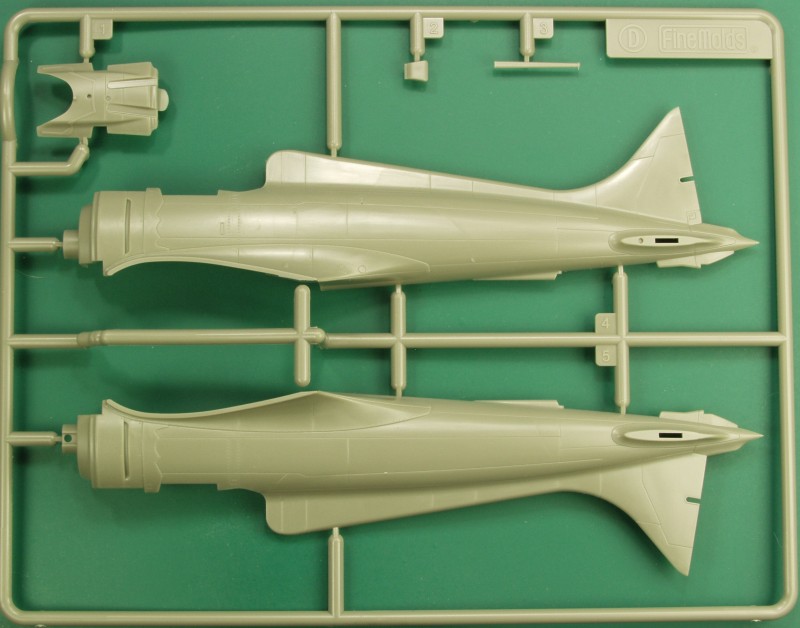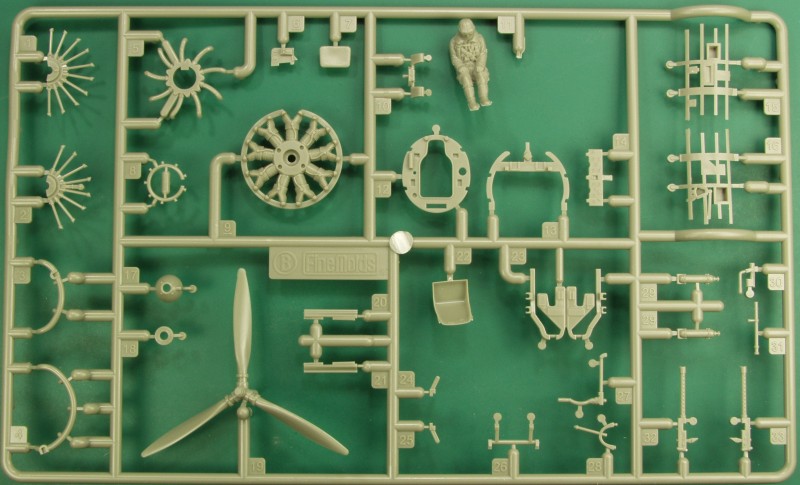
Mitsubishi
A5M4 'Claude'
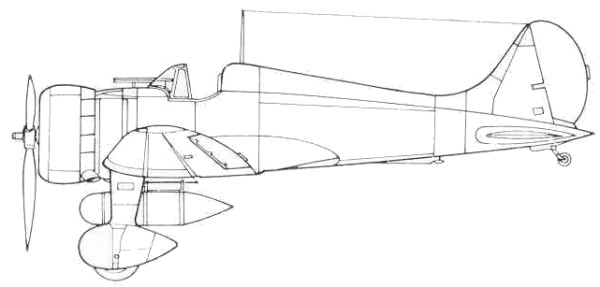
The Mitsubishi A5M was the world's first monoplane shipboard
fighter to enter service and the direct predecessor of the famous
Mitsubishi A6M "Zero". In 1934, the Imperial Japanese Navy prepared a
specification for an advanced fighter, requiring a maximum speed of
220 mph at 9,840 ft and able to climb to 16,400 ft in 6.5
minutes. This specification produced designs from both Mitsubishi and
Nakajima.
Mitsubishi assigned
the task of designing the new fighter to a team led by Jiro Horikoshi
(original creator of the similar but unsuccessful Mitsubishi 1MF10, and
later responsible for the famous A6M Zero). The resulting design,
designated Ka-14 by Mitsubishi, was an all-metal low-wing fighter, with
a thin elliptical inverted gull wing and a fixed undercarriage, which
was chosen as the increase in performance (estimated as 10% in drag, but
only a mere 3% increase in maximum speed) arising from use of a
retractable undercarriage was not felt to justify the extra weight. The
first prototype, powered by a 600 hp Nakajima Kotobuki 5 radial
engine, flew on 4 February 1935. The aircraft far exceeded the
requirements of the specification, with a maximum speed of 279 mph
being reached. The second prototype was fitted with a revised, straight
wing, and after various changes to maximize maneuverability and reduce
drag, was ordered into production as the A5M.
The aircraft entered
service in early 1937, and soon saw action in aerial battles at the
start of the Second Sino-Japanese War,
including air-to-air battles with the Republic of China Air Force's Boeing P-26C Model 281 "Peashooters" in the
world's first aerial dog fighting and kills between monoplane fighters
built of mostly metal.
Chinese Nationalist pilots, primarily flying the Curtiss
Hawk III, fought against the Japanese, but the A5M was the
better of almost every fighter aircraft it encountered. Though armed
with only a pair of 7.7 mm machine-guns, the new fighter proved
effective and damage-tolerant, with excellent maneuverability and robust
construction. Later on A5M's also provided much-needed escorts for the
then modern but vulnerable Mitsubishi G3M bombers.
The Mitsubishi team continued to improve the A5M, working through
versions until the final A5M4, which carried an external underside drop
tank to provide fuel for extended range.
The
Kit
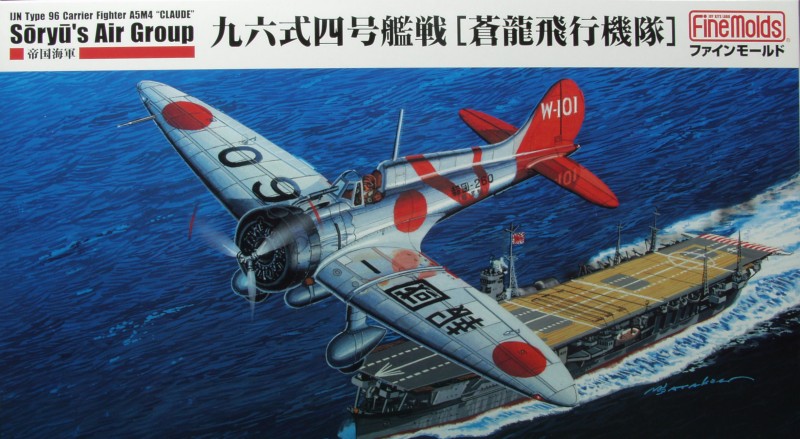
The
FineMolds kit comes in a medium sized
tray type top open box of thin card stock with nice artwork on the front.
Inside the box one finds the three main sprues in one sealed bag and the
decals and clear parts in another. The parts are molded in a light olive
or tan color, are crisply molded and essentially flash free. Mold
separation lines are light and should be easy to clean up. The surface
finish is variable almost glossy on most of the parts but some of the
panels on the wings have more of a matte finish. Not sure if this was done
to provide some variation when doing the natural metal finish or what. I
did not find any surface defects and ejector pin marks have been kept out
of visible areas. Surface detail consists of fine recessed panel lines and
a few really small recessed rivets and fasteners. They are so small they
may well disappear when painted. There are raised surface details where
applicable.
The control
surfaces are molded in the neutral position except for the rudder which is
a separate piece but looks as if it is meant to be mounted in the neutral
position as well. The ailerons are molded to the top wing surface so as to
provide a nice thin trailing edge and there are gaps at the end to make
them appear as a separate pieces. The cockpit is nicely detailed, the top
surface of the wing is the cockpit floor to which everything mounts
including the flight controls, fore and aft bulkheads and side panels with
the structure to which other details added. The instrument panel has
raised bezels with internal detail and a decal overlay is provided. No
seat restraints are provided. Only a windscreen is provided so everything
in the cockpit will be seen through the opening. A pilot is supplied with
the kit, reasonably detailed for the scale, I didn't measure him but he
looks a bit small for the scale.
The engine is a
quite complete assembly made up of 10 parts with separate push rod
assemblies, intake and exhaust manifolds and separate cowl flap ring. The
propeller is a one piece molding.The wings have a one piece top and
bottom. There are holes that need to be opened for the drop tank if used.
The flaps are separate and can be mounted up or down. The wheels are
designed with slots so they can be installed in the wheel spats after
assembly and painting. The wheels are one piece moldings and are not
weighted. OK, lets look at the sprues.
The pilot had
become detached during shipping.
In this photo
you can see the variation in the finish with some panels having a glossy
finish and other a matte finish.
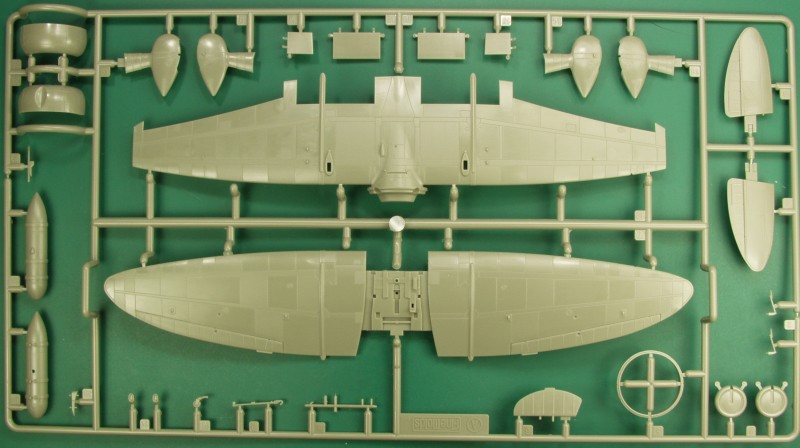
The
clear
part is thin and clear with well defined frame lines in recessed
form.
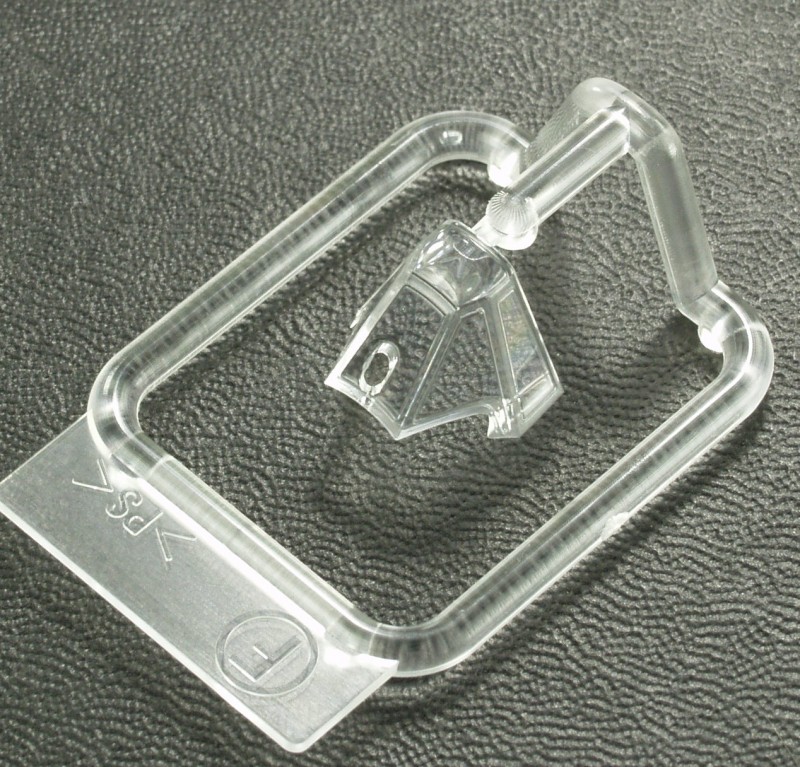
The decals are thin, in register and have a
matte finish. Excess film has been kept to a minimum except
around the large letters. The sheet provides markings for three
aircraft, all in a natural metal finish, one from China in 1937
and two from Japan, one in 1939 and one in 1941.
I have no experience with decals from FineMolds
so can't comment on their quality.
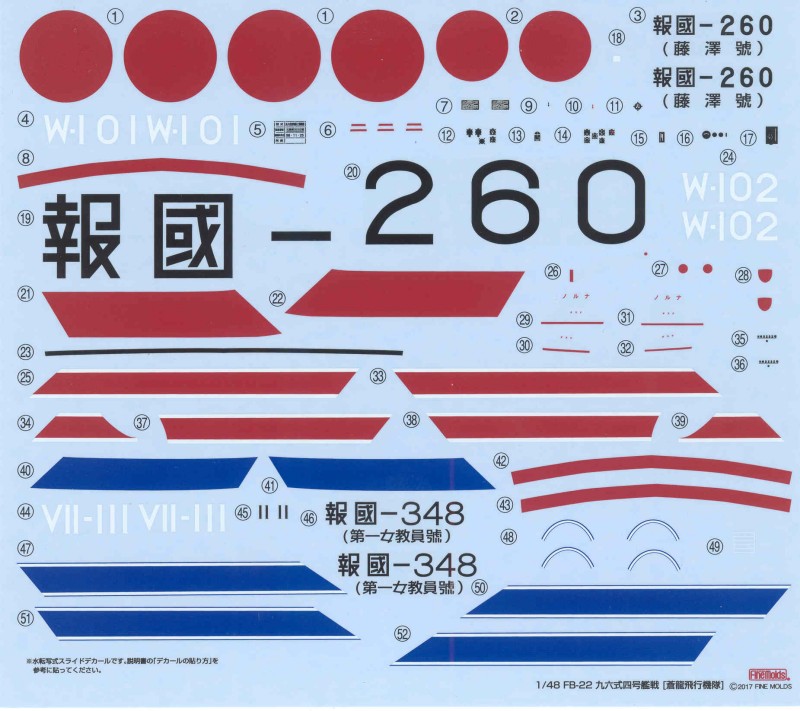
The
instructions are map style, folded in quarters
making eight panels. Most of the verbiage is in
Japanese but there are enough English notations
that it shouldn't be an issue as the diagrams are
all quite clear. The front page I assume is
history of the type ( I don't read Japanese). The
instructions include a parts map, icon chart and
the usual safety warnings. The assembly is divided
into 18 steps and color call outs are provided
along the way with color names and Mr. Color
numbers. There are two panels with painting and
marking instructions for the three aircraft on the
decal sheet. There is also a color reference chart
located there but I can't read any of it except
the generic color names.
After
Market
Goodies
There
are a few things available, wheels from True Details which are
probably too flat and a couple other items, search Scalemates
for what is available, seat restraints are available from
FineMolds.
Conclusions
This
kit looks to be very nicely detailed that fills the void for early
war Japanese aircraft. Some of the early FineMold kits where not
all that great for fit but their newer kits get better reviews.
Still a good idea to treat it as a limited run kit and test fit
before applying glue. Other than that I have no problem
recommending it to most level of modelers.
Links
to kit build or reviews
Another
in box review can be found here.
References
Japanese
Aircraft of the Pacific War by R.J. Francillon
Wikipedia
Back to the Misc Japanese page
Updated 8/17/18



